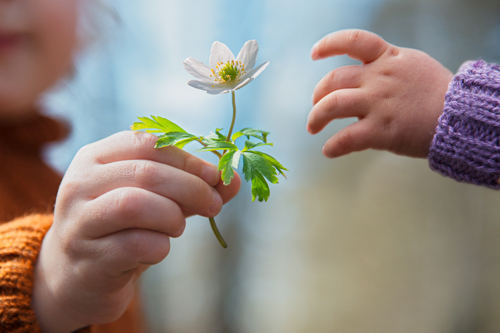Recently I took my mother to see tap star Savion Glover at our local performing arts center. The hall was packed, mostly with children whose parents had brought them to see the legendary dancer. Predominant in the crowd were students from inner-city performing arts schools. During intermission my mother and I went to the concession stand, where candy was on sale for six dollars a box. The kids crowded around, standing on tiptoes and craning their necks to see the candy case. Beside me a girl of about twelve complained to her chums, “I only have three dollars. I can’t get anything.”
Visibly deflated, she rolled back onto her heels, studying her crumpled bills. “This is a special night,” I told her. “You have to have candy.” She looked at me with a blank expression. I extended three dollars to her, watching her face light up. With a big “Thank you!” she turned to her friends and exclaimed, “I can get something, too!” She sprang back to her toes and pushed forward to purchase her treat.
It’s not tough to see where my giving impulse originated. All my life, I’ve seen my mother create delight, enchantment, and pleasure for people—those she loves as well as perfect strangers. She calls it “making magic.” But while children do learn the behavior modeled by their parents, research underscores other reasons why we do good deeds—and should do more of them: It feels good, and it enhances health.
Although generosity can emerge from what appears on the outside to be a good heart, it also comes from the science in your head. When subjects in a National Institutes of Health study were offered money plus a list of causes they might donate it to, researchers discovered that just the thought of giving money activated the brain’s primitive pleasure centers. Feeling good from doing good, in other words, begins before you even take action.
Another study showed that older adults who volunteered to massage infants experienced reduced levels of stress hormones, which are associated with everything from increased heart and breathing rates to decreased cardiovascular and immune function. Still other research has shown that generous people have high levels of oxytocin, our “bonding” hormone, which has anti-inflammatory properties proven to relieve pain. Furthermore, oxytocin may activate the “tend-mend” response, your body’s natural antidote to the “fight-flight” stress reaction.
Even the smallest gesture of kindness counts. The simple act of smiling, for example, releases endorphins and serotonin in a natural chemical reaction that leads to pain relief and mood elevation. Better yet, every smile you give someone else offers that person the opportunity to feel good by returning a smile to you.
Societies, cultures, families, and individuals strengthen from the connections and relationships formed through the spirit of giving. The holiday season, typically a time when we make a greater effort to foster our altruistic side, offers an annual reminder that giving and feeling good operate as a symbiotic flow, enhancing the lives of both giver and receiver. From this perspective, granting yourself the opportunity to experience what some call the “helper’s high” can make you happier and healthier all year long.



